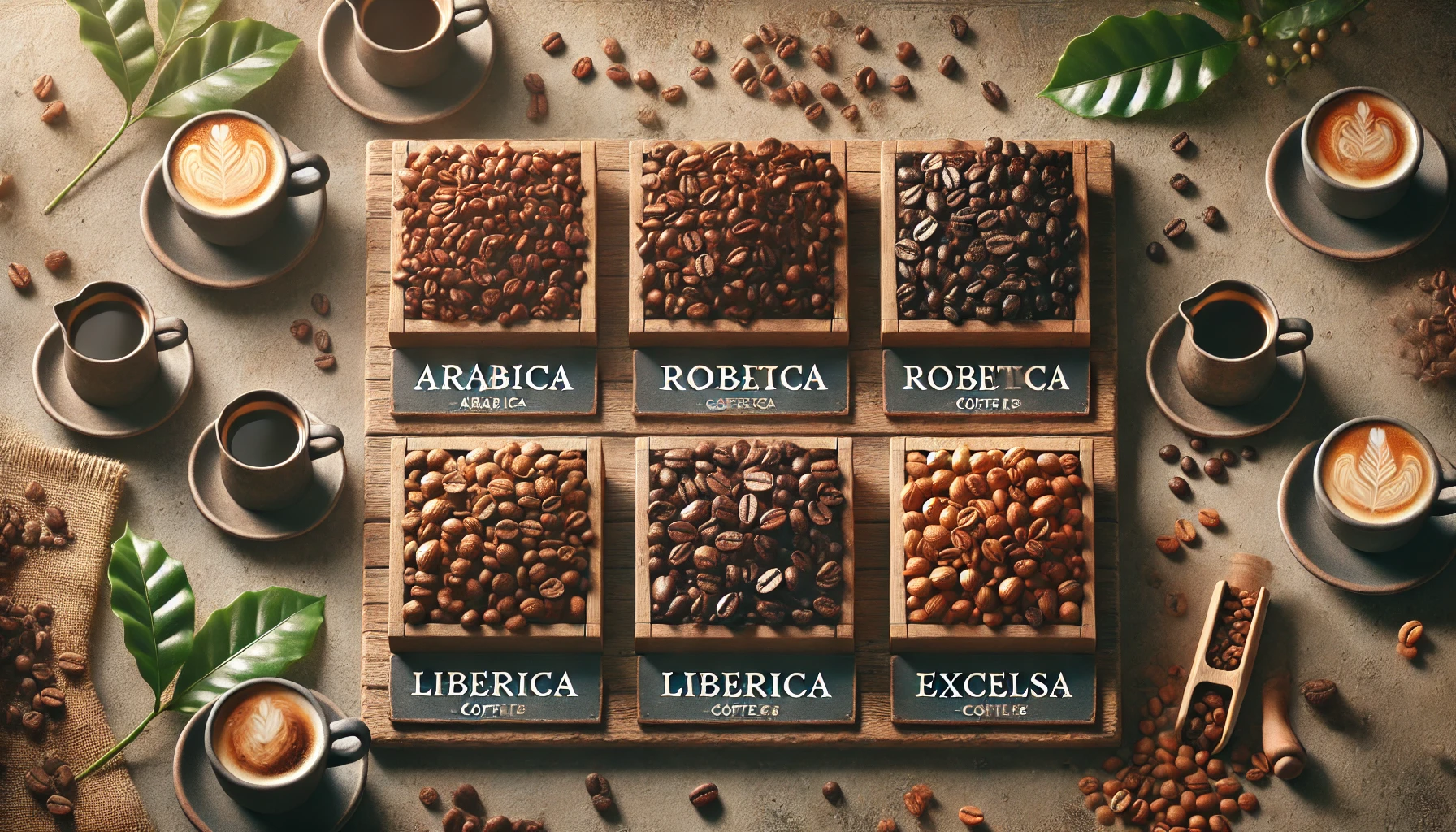When we talk about coffee, we often think about flavors, aromas, or how we like it brewed. But one of the most important factors that determines the taste in your cup is the type of coffee bean. Each variety brings its own flavor profile, growing conditions, and processing style. Understanding the differences can help you choose better coffee — whether you’re brewing at home, visiting a coffee shop, or exploring the world of specialty coffee.
Let’s explore the main types of coffee beans, how they differ, and what makes each one special.
The Four Main Types of Coffee Beans
There are over 100 species of coffee plants, but only four are widely cultivated and consumed:
- Arabica (Coffea arabica)
- Robusta (Coffea canephora)
- Liberica (Coffea liberica)
- Excelsa (Coffea excelsa)
Let’s dive into each one and discover their characteristics.
1. Arabica: The King of Coffee
Arabica is the most popular coffee bean in the world, making up about 60–70% of global coffee production.
Key Traits:
- Flavor: Smooth, sweet, often with notes of fruit, sugar, or floral tones.
- Acidity: High
- Caffeine content: Lower than Robusta
- Shape: Oval with a curved crease
Growing Conditions:
Arabica grows best at high altitudes (600–2000m), in cooler climates, and requires rich soil and consistent rainfall. It’s more fragile and susceptible to pests and diseases, which makes it more expensive to cultivate.
Where It’s Grown:
- Brazil (largest producer)
- Colombia
- Ethiopia
- Guatemala
- Costa Rica
- Kenya
Best For:
If you prefer a smooth and complex flavor, Arabica is for you. It’s the bean of choice for specialty coffee lovers.
2. Robusta: Strong and Bold
Robusta is the second most popular coffee bean, known for its strong flavor and higher caffeine content.
Key Traits:
- Flavor: Earthy, bitter, sometimes with nutty or chocolatey notes
- Acidity: Low
- Caffeine content: Higher than Arabica
- Shape: Rounder and smaller with a straight crease
Growing Conditions:
Robusta grows well at lower altitudes (up to 800m), is more resistant to pests and disease, and can thrive in hotter, more humid climates. It’s easier and cheaper to produce.
Where It’s Grown:
- Vietnam (largest Robusta producer)
- Indonesia
- Uganda
- India
Best For:
If you enjoy bold, intense coffee — or you’re brewing espresso or instant coffee — Robusta might be your go-to. It also creates better crema in espresso shots.
3. Liberica: The Rare Gem
Liberica is far less common globally but holds strong cultural significance in some regions.
Key Traits:
- Flavor: Smoky, woody, and floral with a unique, almost fruity aftertaste
- Aroma: Strong and sometimes described as “funky”
- Caffeine content: Similar to Arabica
- Shape: Larger, irregular beans with a unique almond shape
Growing Conditions:
Liberica trees are tall and hardy, thriving in warm, low-altitude areas. It’s less productive than Arabica or Robusta but has strong regional popularity.
Where It’s Grown:
- The Philippines (especially Batangas and Cavite)
- Malaysia
- Indonesia
Best For:
Adventurous drinkers looking for something different. Its bold and strange profile can be polarizing, but it’s worth a try!
4. Excelsa: The Complex Underdog
Excelsa was once classified as its own species but is now considered a variety of Liberica. It’s rare and only makes up a small fraction of global production.
Key Traits:
- Flavor: Tart, fruity, complex — sometimes wine-like
- Body: Light but layered
- Caffeine content: Moderate
- Shape: Similar to Liberica, slightly smaller
Where It’s Grown:
Mostly in Southeast Asia, particularly:
- Vietnam
- The Philippines
- India
Best For:
Those who enjoy unusual, bright, and tangy flavors. It’s often blended with other beans to enhance complexity.
Arabica vs Robusta: Which Should You Choose?
It all depends on your taste and brewing method:
| Feature | Arabica | Robusta |
|---|---|---|
| Flavor | Smooth, sweet, fruity | Bitter, earthy, strong |
| Caffeine | Lower | Higher |
| Acidity | High | Low |
| Price | Higher | Lower |
| Best Uses | Pour-over, drip, filter | Espresso, blends, instant |
If you’re buying coffee beans or grounds, check the label — many brands use 100% Arabica, but some blends include Robusta to reduce cost or boost caffeine.
Tips for Choosing the Right Coffee Beans
- Know your brewing method: Some beans perform better in espresso machines (Robusta), others in pour-over or French press (Arabica).
- Check the roast level: Lighter roasts preserve more flavor differences between bean types, while dark roasts tend to mask them.
- Look for origin info: Single-origin coffees often highlight the bean’s natural profile.
- Try blends: Many roasters create custom blends to balance body, acidity, and aroma.
- Experiment! Taste is personal — explore and find what pleases your palate.
